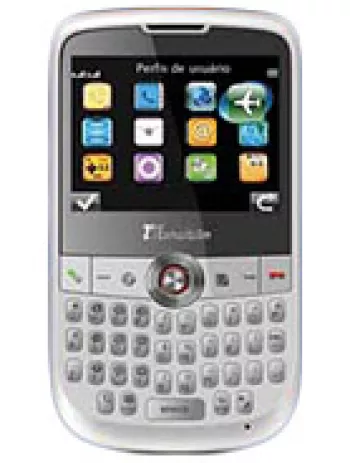
Overview of ZTE Blade Force
The ZTE Blade Force was announced and released in October 2017. As part of the Blade series, this smartphone aims to provide a balance between functionality and affordability, catering to a wide range of users. Its features are standard for its price range, and it's mainly targeted at those who need a reliable device for everyday tasks without frills.
Design and Build
The ZTE Blade Force sports a simple yet practical design with dimensions of 156 x 78 x 9.1 mm and a weight of 170.1 g, making it comfortable for daily use. It features a Nano-SIM slot and is available in a sleek blue color. The build does not allow for the battery to be removed, which is a common trait in many modern smartphones.
Display
This smartphone is equipped with a 5.5-inch IPS LCD display, offering a resolution of 720 x 1280 pixels. The 16:9 aspect ratio coupled with a pixel density of approximately 267 ppi grants users clear and vibrant visuals suitable for multimedia consumption like video streaming and casual gaming.
Performance
Under the hood, the ZTE Blade Force is powered by the Qualcomm MSM8920 Snapdragon 427 chipset, featuring a quad-core 1.4 GHz Cortex-A53 CPU and an Adreno 308 GPU. This setup offers adequate performance for everyday tasks such as browsing, social media, and light gaming. The device runs on Android 7.1.1 Nougat, giving users access to a wide range of apps through the Google Play Store.
Memory and Storage
The device comes with 2GB of RAM and 16GB of internal storage. For users needing extra space, it includes a dedicated microSDXC card slot, allowing for expandable storage. This flexibility ensures that users can store more photos, videos, and apps without worrying about space constraints.
Camera
The ZTE Blade Force features a simple camera setup. The rear camera includes a single 8MP sensor with autofocus and an LED flash, capable of shooting video at 1080p at 30fps. The front camera, designed for selfies and video calls, is a 5MP sensor. While not extraordinary, these cameras are sufficient for casual photography and social media sharing.
Battery Life
A 3000 mAh Li-Ion non-removable battery powers the Blade Force, ensuring it lasts through a full day of moderate use. The battery capacity is standard for devices in this range, providing decent screen time for communication, entertainment, and productivity.
Connectivity
The Blade Force supports GSM, CDMA, HSPA, and LTE networks with speeds up to HSPA 42.2/5.76 Mbps and LTE Cat4 150/50 Mbps, making it versatile in network compatibility. Basic wireless connectivity options include Wi-Fi 802.11 b/g/n, Wi-Fi Direct, and Bluetooth 4.2. GPS functionality is available, but the lack of NFC and radio limits some connectivity features.
Audio
The device includes a standard 3.5mm headphone jack, allowing users to connect earbuds or headphones without needing adapters. It also features a loudspeaker for media playback and calls without using headphones.
Additional Features
Simplicity is key in the ZTE Blade Force’s design, with sensors limited to an accelerometer. This minimalistic approach keeps the device easy to use for general purposes without extra functionalities that might complicate the user experience.
Pricing
When released, the ZTE Blade Force was priced at approximately 110 EUR, positioning it as an affordable option in the smartphone market. The pricing reflects its focus on delivering essential features at a budget-friendly price.
Conclusion
The ZTE Blade Force is a practical choice for users seeking a straightforward and budget-friendly smartphone. While its specifications and features are basic, they fulfill the needs of users who prioritize utility and reliability over cutting-edge technology. Its affordability, combined with the essential phone functions, makes it suitable for users looking for a dependable mobile experience without breaking the bank.
Key Features of ZTE Blade Force
- Supports GSM/CDMA/HSPA/LTE networks for versatile connectivity.
- Released in October 2017, ensuring availability in the market.
- Lightweight design at 170.1 g with dimensions of 156 x 78 x 9.1 mm.
- 5.5-inch IPS LCD display with 720 x 1280 resolution.
- Powers Android 7.1.1 (Nougat) for a user-friendly experience.
- Equipped with Qualcomm Snapdragon 427 chipset and quad-core CPU.
- Allows memory expansion via microSDXC card slot.
- 8 MP main camera with LED flash and 1080p video capability.
- 5 MP front camera for selfies and video calls.
- Supports common wireless standards with Wi-Fi and Bluetooth 4.2.
- Includes useful features like GPS and accelerometer sensor.
- Long-lasting 3000 mAh battery ensures extended usage time.
- Affordable pricing at approximately 110 EUR.
Disadvantages of ZTE Blade Force
- Low internal storage: Only 16GB of internal storage, which may not be sufficient for many users without frequent data management or use of a microSD card.
- Limited RAM: 2GB RAM may not support smooth multitasking or handle demanding applications well.
- Outdated operating system: Runs on Android 7.1.1 (Nougat), which is significantly outdated and may not support the latest apps and features.
- Basic camera capabilities: 8 MP rear and 5 MP front cameras may not produce high-quality images or videos compared to more recent smartphones.
- No support for NFC: Lacks Near Field Communication, which is a useful feature for mobile payments and quick data exchange.
- No radio functionality: Missing built-in FM radio which some users may find useful.
- No fast charging support: The battery may take longer to charge, especially given its 3000 mAh capacity, and lacks modern charging features.
- Limited display resolution: The screen resolution is only 720 x 1280 pixels, which may not provide the sharpest clarity or detail compared to Full HD displays.
- MicroUSB port instead of USB-C: Uses an older microUSB 2.0 port, which is less versatile and slower compared to the modern USB-C standard.

View Also
More Phones
All Rights Reserved +14267 Phones © Mobilawy 2025

























